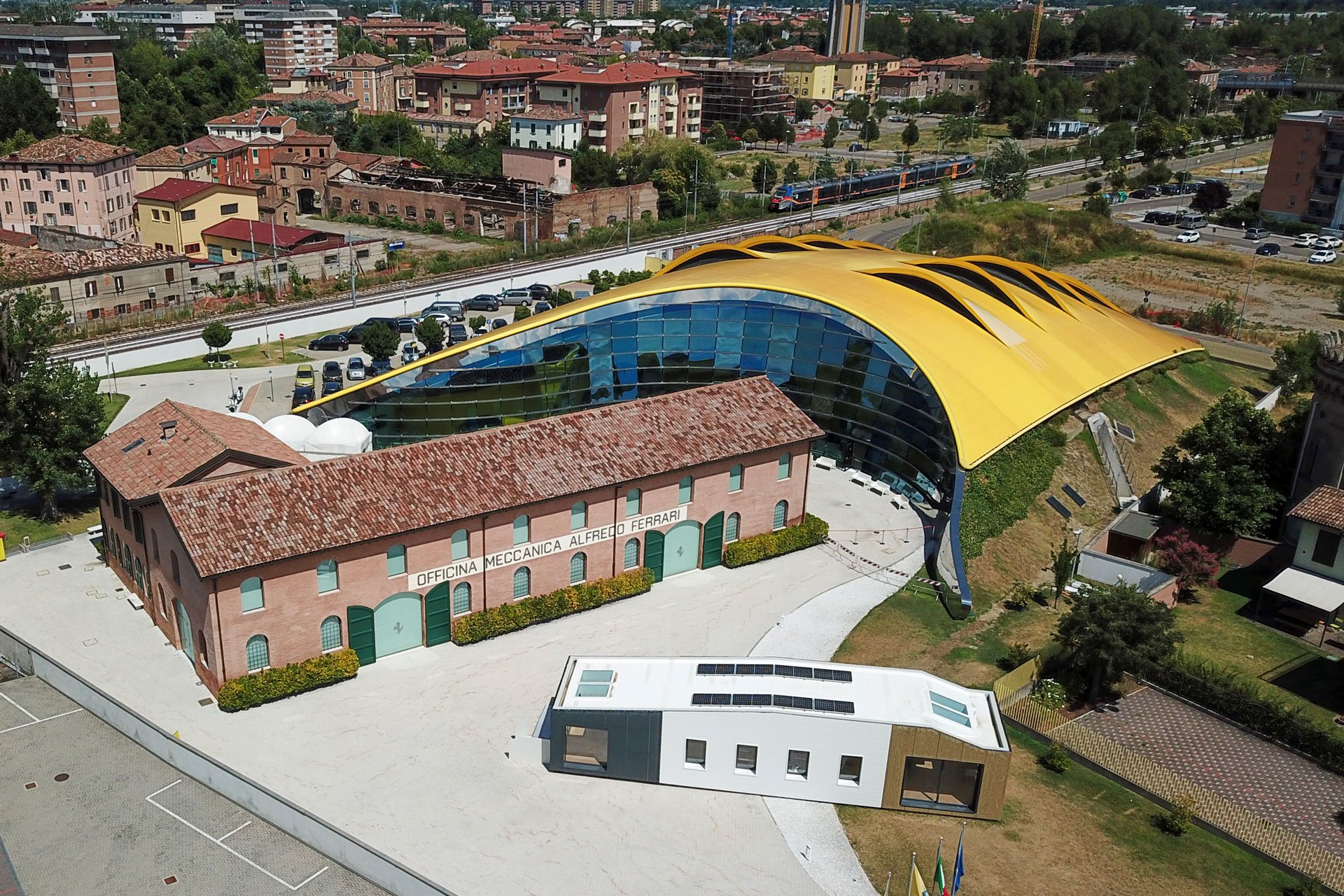Login
Registered users

The Ferrari is the materialisation in the real world of its founder’s vision and his unconditional love for the car ‒ testified to by the display of some of the most stunning automobiles.
The museum dedicated to Enzo Ferrari was opened in Modena in 2012. Its premises feature two main buildings: the renovated house Enzo Ferrari was born in and the exhibition Gallery (with a total floor space of 5000 m2). The striking yellow roof of the latter echoes the shape of a racing car engine hood, thus becoming an authentic icon for its town. After a thorough and scientific renovation, the entrepreneur’s home was fitted out to provide a museum visit illustrating the various key moments in Enzo Ferrari's life.
The foundation stone came in the form of an organic block of polished aluminium, which went on display for the public within the area upon completion of the works. This is the same material Mr Ferrari used to shape his first creations, and it was likewise used for the roof ‒ the signature element in the design.
The original design was by the architect Jan Kaplicky, of the Future Systems office. However, after he passed away, the architect Andrea Morgante completed the project. Mr Morgante himself described the project as a true challenge, where he was inspired not only by one of the most important figures in the car racing world, but also by one of the globe’s most far-sighted architects.

The design was formed around the presence of the enterpriser’s home, as the ‘centre of gravity’ and the departure point for generating the identity to the whole area. The Gallery’s modern and plastic volume adapts to and interacts with the traditional building in a complementary fashion, wrapping itself around the older edifice with balance. The meandering and curved lines embrace the simple regular geometrics of the house.
Indeed, innovation is a vital element in this design, from the Gallery’s roof to its façade: the first is three-dimensional and aluminium, while the second is curved yet structural. Particular attention has been given to sustainability, through the use of solar panels and natural ventilation as well as a geothermal system for heat regulation in the indoor spaces.
Such an integrated and innovative context is the setting to Capsule ‒ a self-supporting space created to provide the museum with a multimedia conference room for 6 months, thus expanding on the experience for fans of this brand.
Capsule’s sophisticated modern and neutral design perfectly adapts to the aesthetics of the surrounding edifices, from Enzo Ferrari's birthplace to the exhibition Gallery, enhancing the historic context of this extraordinary setting.
Capsule is an innovative and flexible modular structure featuring off-site steel construction technology. It has been designed to pair and fully integrate with the existing buildings so as to increase available floor space while creating new and modern experiences in scope for use. Thanks to its versatility, Capsule may be configured in solutions for a variety of needs: offices, conference rooms, showrooms.
The Capsule product was shortlisted for the ADI Design Index 2021.
>>> Find out more about Capsule: info.mannigroup.it




Location Modena
Engineering: Manni Green Tech
Concept design and architectural project: Il Prisma
Interior design: Lago
Photography by Andrea Martiradonna, courtesy of Manni Group